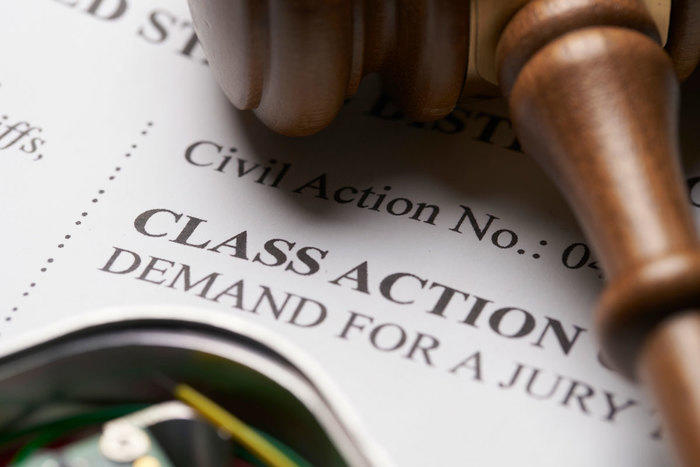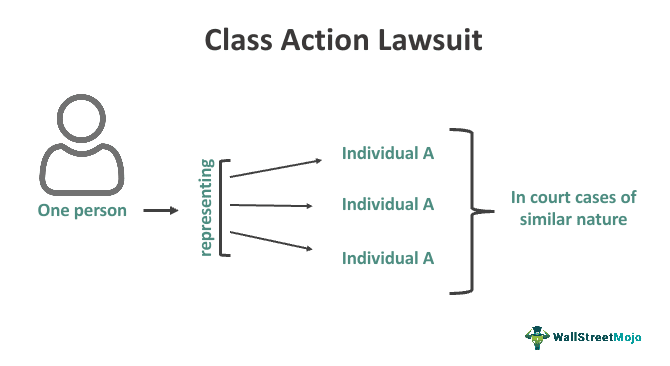Comprehending Your Civil Liberties: A Comprehensive Overview to Class Action Lawsuits
Wiki Article
Comprehending Class Activity Claim: An Overview for Attorney
Course action lawsuits have actually ended up being an integral component of the legal landscape, allowing for the debt consolidation of several insurance claims into a solitary activity. By delving right into the details of class activity lawsuits, this overview outfits attorneys with the knowledge and tools required to successfully navigate this intricate area of legislation.The Essentials of Class Action Legal Actions
Class action claims are a lawful system used to consolidate similar cases from a group of individuals into a solitary suit, offering a reliable and economical technique to looking for justice and resolution. This sort of suit enables a depictive complainant, acting on behalf of the entire class, to bring a case versus a defendant who has allegedly caused harm or breached the civil liberties of numerous individuals.The basic demands for bringing a course activity legal action include numerosity, commonality, typicality, and adequacy of representation. Numerosity describes the reality that the class should be so huge that joinder of all participants would be unwise. Commonality suggests that there have to prevail concerns of law or truth that are shared by all participants of the class. Typicality calls for that the insurance claims of the representative plaintiff are regular of the claims of the entire course. Adequacy of representation guarantees that the representative plaintiff will properly represent the interests of the whole course.
Class action suits can be advantageous for both complainants and offenders. For defendants, it uses the opportunity to effectively resolve several cases in a single suit, staying clear of the need to protect versus numerous individual legal actions.
Identifying and Assessing Potential Class Participants
After developing the fundamental needs for a course action suit, the next action is to determine and examine potential class members. If they meet the required requirements., this procedure includes establishing that might be component of the class and assessing their insurance claims to figure out.To recognize possible course participants, legal representatives usually carry out considerable study and collect pertinent information. This may include examining records, performing interviews, and analyzing documents to recognize people or entities that might have been influenced by the supposed misbehavior. It is crucial to establish a extensive and clear checklist of possible class members to guarantee that all impacted parties are consisted of in the legal action.
When potential course members have been recognized, the next action is to examine their claims. If they satisfy the legal needs for class qualification, this includes evaluating the values of each private claim to figure out. Attorneys must carefully assess the realities, evidence, and lawful theories of each prospective class member's claim to ensure that they have a viable case.
Examining prospective class members also includes determining whether they fulfill the class meaning and have experienced comparable damage as an outcome of the accused's activities. This requires contrasting the realities and situations of each prospective course member's circumstance to the allegations and legal concepts placed forth in the suit.
Browsing the Course Certification Refine
To efficiently navigate the class certification procedure, attorneys must carefully abide by the procedural demands established forth by the court. Course qualification is an important action in a course activity legal action, as it determines whether a case can proceed as a class action, standing for a team of people that have similar insurance claims versus an offender. The procedure entails pleasing specific criteria, such as numerosity, commonality, typicality, and competence of depiction.To start with, lawyers must establish numerosity by demonstrating that the course is so large that individual joinder is impractical. This can be achieved through evidence or expert testimony. They must develop commonness by showing that there are common inquiries of legislation or truth that predominate over individual concerns. This needs a detailed analysis of the defenses and cases entailed.
Next, legal representatives should reveal typicality, which indicates that the representative complainant's cases are common of the cases of the class members. This guarantees that the rate of interests of the representative plaintiff straighten with the rate of interests of the course. Legal representatives need to demonstrate competence of he has a good point representation, suggesting that the representative complainant and their guidance will rather and appropriately represent the passions of the course.
To browse this process efficiently, lawyers need to thoroughly prepare by performing comprehensive study, gathering evidence, and creating a compelling disagreement that satisfies each of these requirements. They need to also be prepared to react to any type of objections or obstacles raised by the accused. By vigilantly sticking to the step-by-step needs set forth by the court, attorneys can boost their chances of obtaining class accreditation and progressing the passions of the course members.

Key Approaches for Handling Class Activity Lawsuits
Upon successfully browsing the class certification procedure, attorneys should then implement essential techniques for properly taking care of course action litigation. These techniques are crucial to make certain that the situation continues smoothly and effectively, eventually taking full advantage of the possibilities of a favorable outcome for the course participants.
One secret approach is to establish a cohesive and strong legal group (Class action lawsuit). This entails assembling a group of attorneys with know-how in course activity lawsuits, as well as other relevant areas such as the particular market or subject issue associated with the situation. A versatile group can bring various viewpoints and skills to the table, improving the total effectiveness of the litigation
One more vital technique is to establish a thorough and well-thought-out lawsuits plan. This strategy needs to outline the general goals of the instance, in addition to the particular legal theories and disagreements that will be gone after. It must also include a timeline and budget plan to make certain that the instance remains on track and within the allocated resources.
Furthermore, lawyers should proactively involve with the class members throughout the lawsuits procedure (Class action lawsuit). This includes offering regular updates on the progression of the case, seeking input and responses from the class members, and addressing any type of concerns or problems they may have. By promoting open interaction and cooperation, lawyers can construct trust and assistance among the course participants, which can be instrumental in attaining a successful resolution
Settling Course Action Legal Actions: Settlement and Authorization
When it involves resolving class activity lawsuits, reliable settlement and getting authorization are vital steps in achieving a resolution. Course action lawsuits are complex and involve a lot of complainants, making it critical to reach a settlement that is fair and adequate to all events included.
As soon as a negotiation agreement is gotten to, it needs to be authorized by the court. The court's role in this procedure is to ensure that the settlement is fair, sensible, and sufficiently protects the interests of the class members. The court will certainly consider aspects such as the nature of the claims, the toughness of the evidence, the prospective healing for the course participants, and any kind of arguments elevated by class participants.
Getting court authorization is vital as it offers finality you can look here to the settlement and protects the rate of interests of the class participants. It guarantees that the negotiation is binding and enforceable, and course participants can obtain their rightful compensation.
Conclusion

Class activity legal actions have actually come to be an indispensable part of the legal this content landscape, allowing for the consolidation of multiple insurance claims right into a solitary activity. Course accreditation is a crucial action in a class activity suit, as it identifies whether a case can continue as a course activity, standing for a group of individuals that have comparable claims against an offender. By diligently adhering to the procedural demands established forth by the court, legal representatives can boost their chances of acquiring course accreditation and progressing the interests of the class participants.
The court will think about factors such as the nature of the insurance claims, the toughness of the evidence, the possible recovery for the class participants, and any arguments increased by course members.
By determining and analyzing prospective course participants, attorneys can establish the feasibility of a class action lawsuit.
Report this wiki page